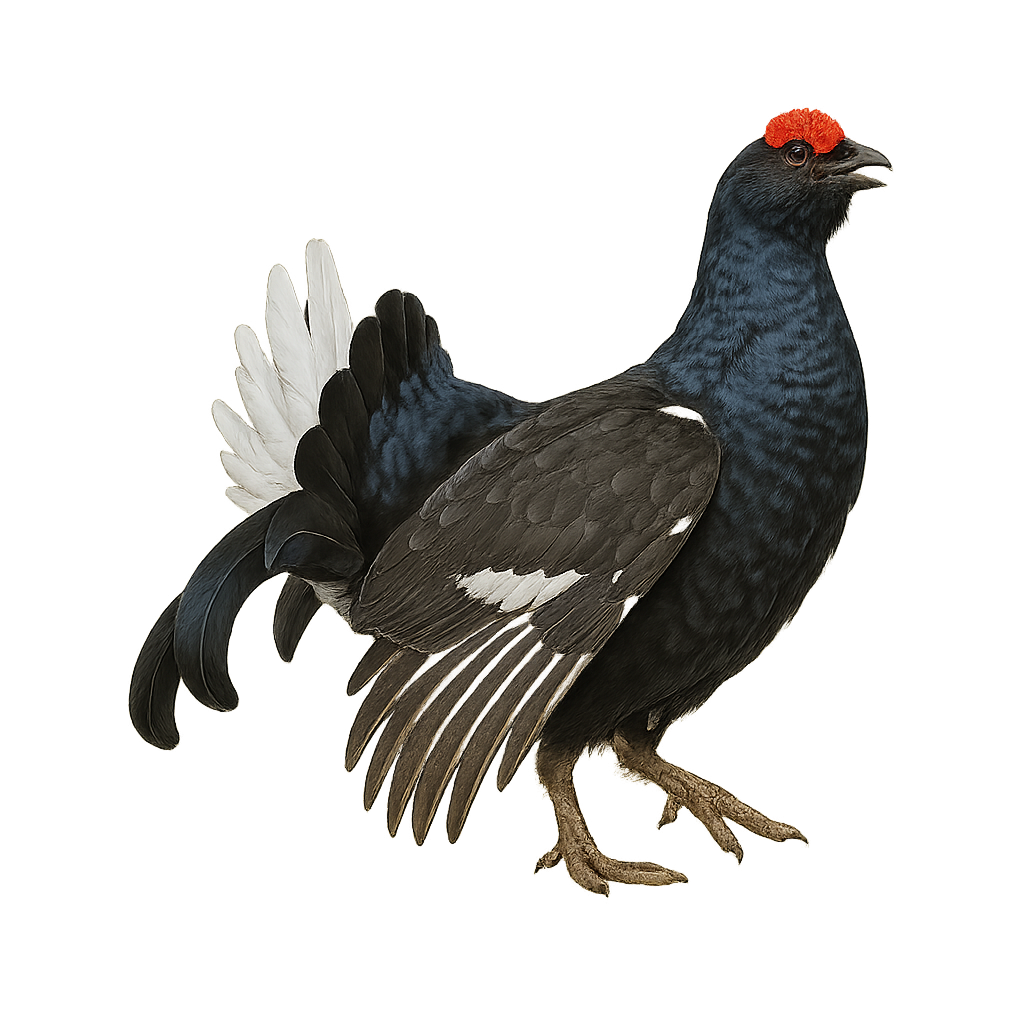Your wildlife photography guide.
Explore the black grouse in detail, study its behavior, prepare your shots.
Where to observe and photograph the black grouse in the wild
Learn where and when to spot the black grouse in the wild, how to identify the species based on distinctive features, and what natural environments it inhabits. The WildlifePhotographer app offers tailored photography tips that reflect the black grouse’s behavior, helping you capture better wildlife images. Explore the full species profile for key information including description, habitat, active periods, and approach techniques.
Black Grouse
Scientific name: Lyrurus tetrix

IUCN Status: Least Concern
Family: PHASIANIDAE
Group: Birds
Sensitivity to human approach: Suspicious
Minimum approach distance: 30 m
Courtship display: March to May
Incubation: 23-27 jours
Hatchings: April to June
Habitat:
Coniferous forests, mountains
Activity period :
Primarily active during the day, with peak activity in the morning and late afternoon.
Identification and description:
The Western Capercaillie, or Lyre Grouse, is a large bird primarily found in the coniferous forests and wooded areas of Eastern and Northern Europe, notably in Scandinavia, Russia, and Poland. It typically measures about 40 to 50 cm in length and weighs between 500 and 800 g. Its plumage is mainly brown and black, with white markings and red hues on the chest. The Lyre Grouse is particularly famous for the spectacular courtship dance of the male, who spreads his feathers in a lyre shape to attract a female. It primarily inhabits dense forest habitats and feeds on berries, seeds, young shoots, and insects. While its population remains relatively stable in some areas, the Lyre Grouse is threatened by habitat loss, deforestation, and human disturbances.
Recommended lens:
300 mm – adjust based on distance, desired framing (portrait or habitat), and approach conditions.
Photography tips:
Use a telephoto lens to photograph from a distance, respecting the discreet nature of the species.
Photograph early in the morning or late in the afternoon, when the soft light highlights the lyre-shaped tail and vibrant plumage of the capercaillie.
Look for it in alpine and subalpine habitats, such as coniferous forests with clearings, heathlands, bogs, and rhododendron areas, at elevations between 1,700 and 2,300 meters.
Be patient and discreet to avoid disturbing its natural behavior. Avoid sudden movements and maintain silence.
The capercaillie is a protected species in certain areas due to habitat loss and human disturbances. It is essential to respect its environment and minimize disruptions, especially during the breeding and hibernation periods.
The WildlifePhotographer App is coming soon!
Be the first to explore the best nature spots, track rutting seasons, log your observations, and observe more wildlife.
Already 1 449 wildlife lovers subscribed worldwide

